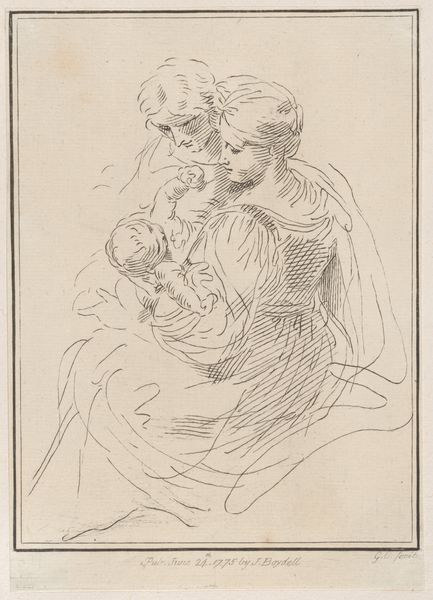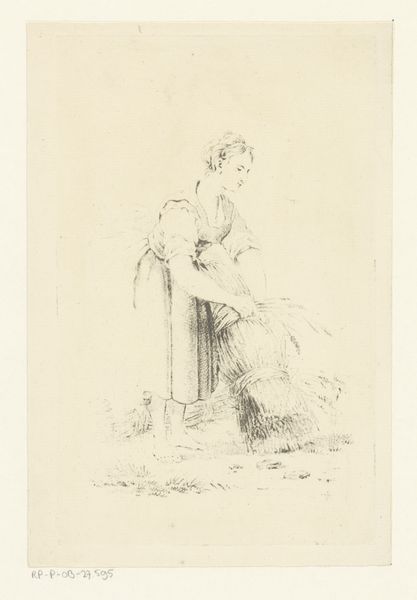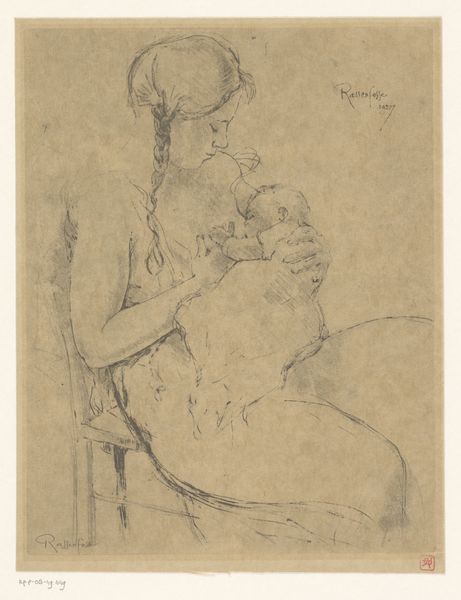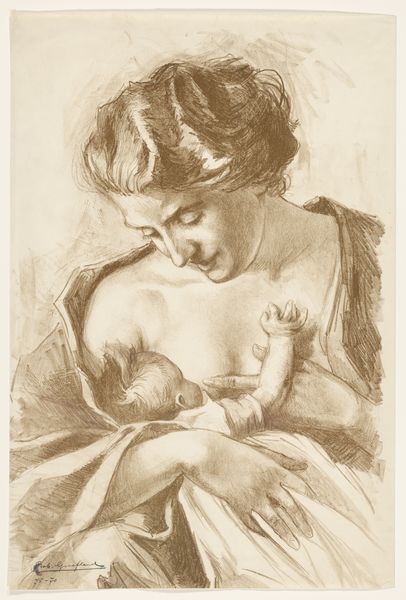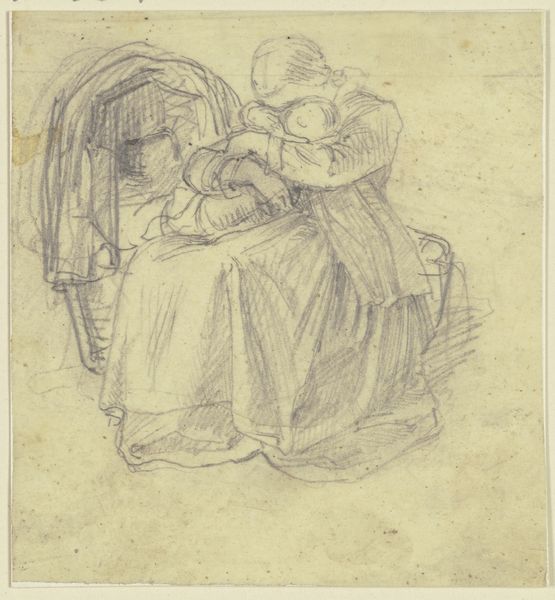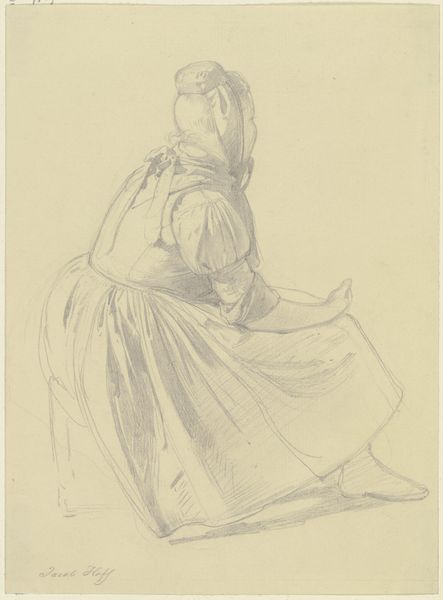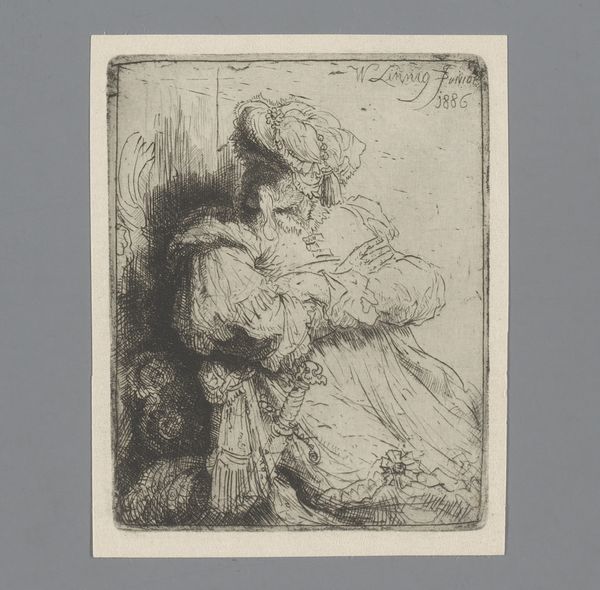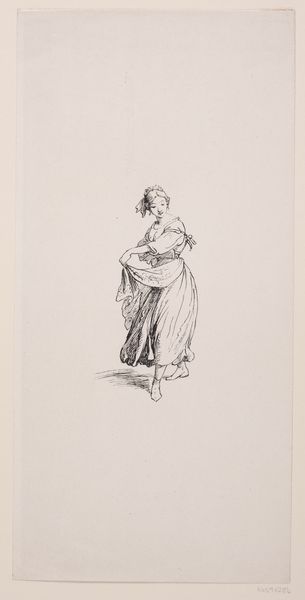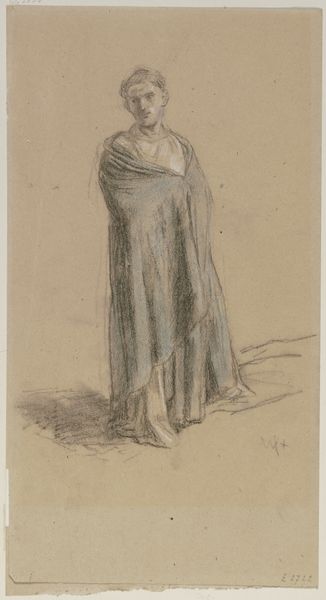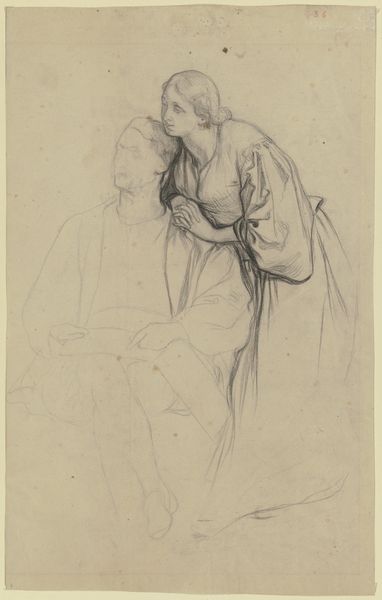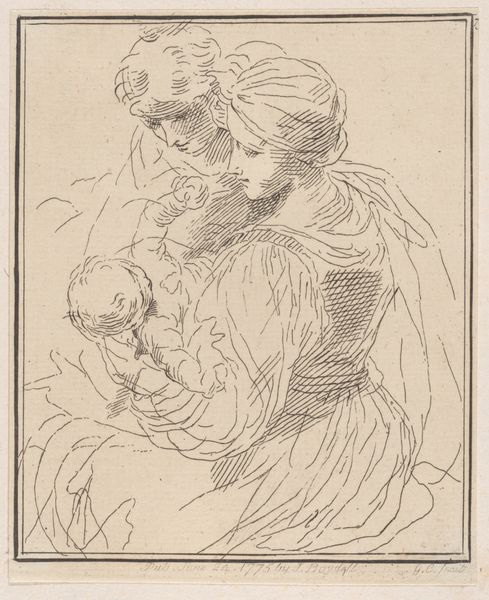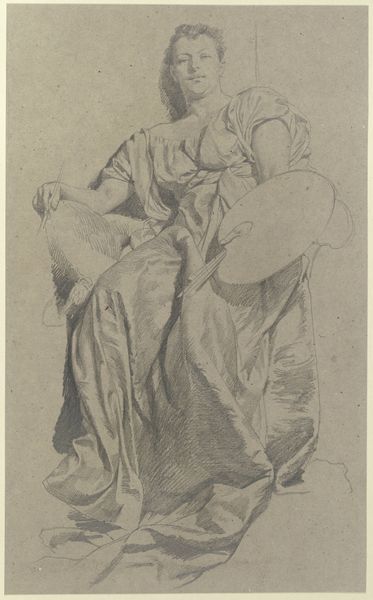
drawing, paper, pencil
#
portrait
#
pencil drawn
#
drawing
#
figuration
#
paper
#
pencil drawing
#
pencil
#
genre-painting
#
realism
Dimensions: height 452 mm, width 274 mm
Copyright: Rijks Museum: Open Domain
Editor: This is "Studie van een Zeeuwse boerin met een kind op de arm," or "Study of a Zeeland Farmer's Wife with a Child in Her Arms," by Joan Berg, likely created between 1861 and 1935. It's a pencil drawing on paper. What strikes me is its simple, almost melancholic feel. What do you see here? Curator: The material elements speak volumes. Consider the paper itself, its manufacture and availability reflecting industrial progress. The pencil, too, is not a neutral tool; its graphite traces capture not just the image, but also the labor of the artist. And what labor is depicted? A mother and child, yes, but contextualize it: the rural worker, the peasant class... what are their lives like? Editor: That's interesting. I was focused on the realism, but thinking about it in terms of labor shifts my perspective. How does focusing on materials impact our reading of the subjects themselves? Curator: The humble materials force us to consider the woman not just as a symbol of motherhood, but as a worker. The drawing, itself a product of labor and accessible materials, elevates her lived experience. What’s produced? Life. Care. Sustenance. How are these valued, represented, and consumed by a rapidly changing society? Editor: So the very act of using these simple materials to depict this woman challenges the traditional hierarchy between fine art and the lives of working-class people. The artist, by choosing a readily available medium, brings the subject into focus, rather than glorifying her. Curator: Precisely. It makes you consider how mass production impacts how we look at art – who is depicted, with what material means and for what ultimate purpose? The drawing acts as a witness to a specific time and place. Editor: I see it so differently now. Thinking about the drawing itself as a product – its creation, the materials used – adds a layer of social commentary I completely missed before. Thank you! Curator: My pleasure. It's crucial to consider the broader systems of production and consumption when approaching a work.
Comments
No comments
Be the first to comment and join the conversation on the ultimate creative platform.
